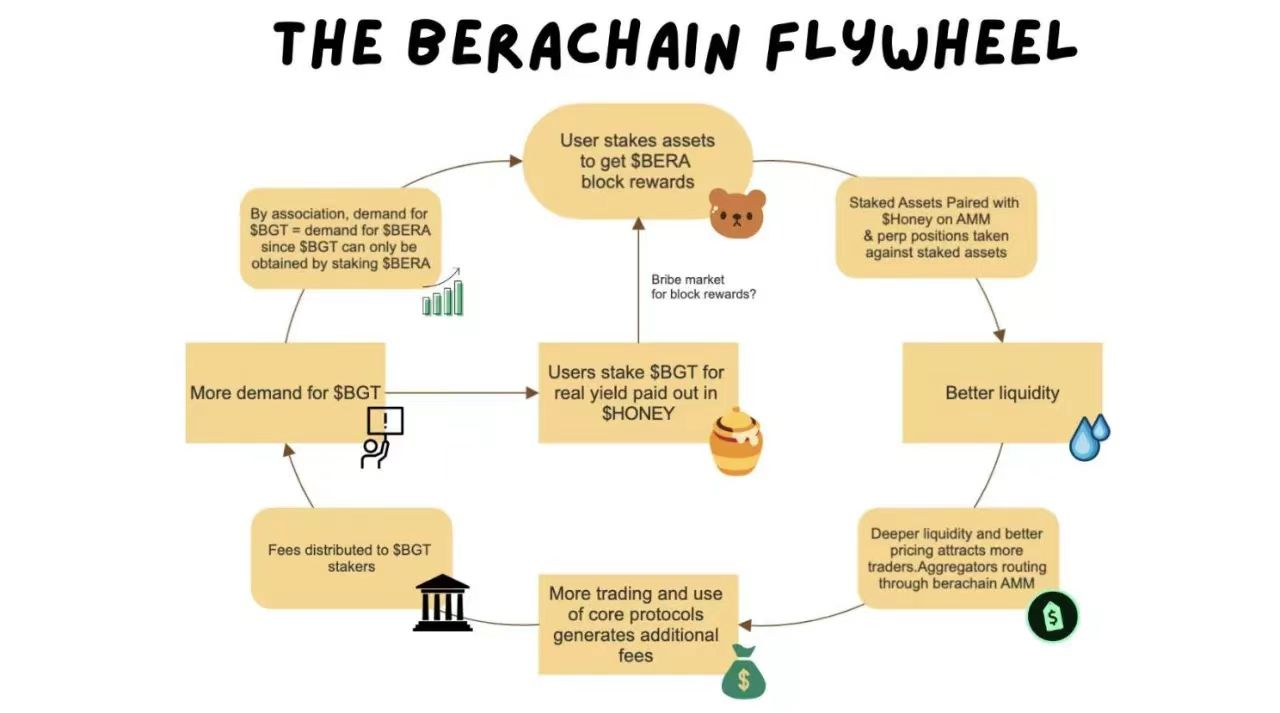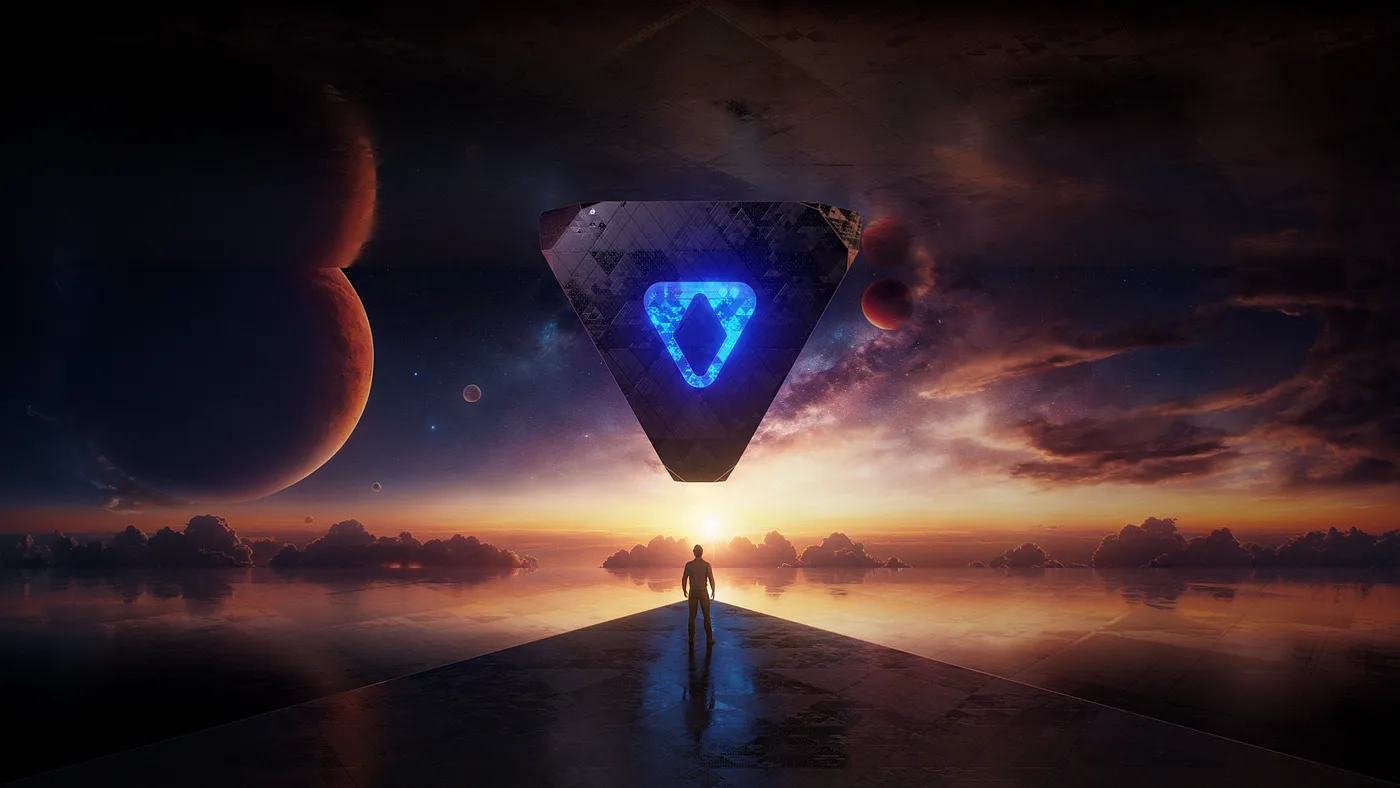Application of Liquidity in PoS: Examples from Berachain, Tenet, and Mangate
Liquidity in PoS: Examples from Berachain, Tenet, and Mangate.The PoS mechanism, while protecting the security of the public chain, also occupies a large amount of funds, resulting in low utilization of these funds. DeFi is also often criticized for lack of loyalty in liquidity and projects are prone to death spirals. How to combine these two to enable liquidity to participate in protecting the security of the public chain while earning profits? Berachain, Tenet, Mangate, and other projects have made attempts in this regard, and BlockingNews will briefly discuss it in this article.
Berachain: Liquidity Proof and Three-Generation Token Model
Berachain is an EVM-compatible chain built using the Cosmos SDK, which uses a unique “liquidity proof” consensus mechanism and a three-generation token model. Berachain hopes to incentivize the ecosystem in a more sustainable way, with liquidity proof consensus promoting the synchronous growth of Berachain’s liquidity, asset utilization, and market value.
The three types of tokens in Berachain are: native stablecoin $HONEY, Gas token $BERA, and governance token $BGT. The reason for separating the Gas token and the governance token is to avoid the voting power of frequent users in the network decreasing over time.
Users deposit various assets into Berachain’s consensus system to obtain the right to participate in consensus and share transaction fees, protocol fees, and block rewards $BERA. The assets deposited by users will be used to provide liquidity with newly minted stablecoin $HONEY in AMM. The collateral for minting $HONEY is the assets deposited by users, and the amount of assets that users can ultimately redeem may also decrease due to impermanent loss in AMM. In addition to being used to pay Gas fees, $BERA can also be staked to obtain governance token $BGT, which is the only channel for producing $BGT.
- Interpretation of How to Earn Profits with PENDLE
- Introducing two new NFTs launched this week: Ether and Azuki Elementals.
- The Ethereum team has tentatively scheduled the launch of a new testnet called Holešky on September 15th to replace Goerli.
Staking $BGT can get a share of the protocol income such as transaction fees in the AMM. So, the flywheel of Berachain may be as follows.

- Users pledge assets to get $BERA block rewards, and the pledged assets and $HONEY form a trading pair in AMM;
- The more assets pledged, the better the liquidity of the protocol, and the more trading volume it can attract;
- The more trading volume, the more protocol income it generates, and the higher the demand for $BGT;
- As $BGT can only be produced by pledging $BERA, the demand for $BGT leads to an increase in demand for $BERA;
- Incentivize users to pledge more assets to obtain $BERA.
Currently, the Berachain mainnet has not yet been launched, so its performance remains to be seen. In April of this year, the project received investment from Polychain Capital, Hack VC, OKX Ventures, and others with a valuation of $420 million.
Tenet: Diversified Proof of Stake and Liquidity Staking
Tenet is also an EVM-compatible chain built on the Cosmos SDK that introduces a new proof of stake framework – Diversified Proof of Stake (DiPoS) – which improves security compared to traditional PoS models.
In decentralized applications, security incidents such as governance attacks occur from time to time, which correspond to network attacks in Layer 1 blockchains. Diversified Proof of Stake allows users who hold a basket of assets to participate in network consensus as validators, eliminating the risk of the network being controlled by a user who holds a large amount of a single asset (the native token of the public chain).

Tenet’s consensus can approve assets other than the native token to participate in network security, such as ETH, ATOM, BNB, MATIC, ADA, and DOT. As the number of asset types increases, network attackers need to have a significant share in these mainstream crypto assets to complete the attack, benefiting from the collective security brought by these assets.
In order to help users earn income while maintaining their own network security, Tenet also accepts liquidity staking derivatives forged by protocols such as Lido and RocketPool, as well as institutions such as Binance and Coinbase. At the same time, Tenet provides its own internal infrastructure to help assets such as ETH and ATOM complete liquidity staking. Since Tenet cares more about network security, it can make its own liquidity staking service more attractive by not charging a 10% management fee like protocols such as Lido.
Through this cross-chain staking method, Tenet hopes to create a mutually beneficial cooperation relationship where other chains can increase security by pledging more, users have more income opportunities, and Tenet itself benefits from the security improvement brought by diversified proof of stake.
Currently, Tenet has launched the mainnet beta version, and the native token $TENET has also been listed on exchanges such as Bybit and Kucoin. In the Tenet system, there are also native stablecoins and DEX.
Mangate Finance: DEX Application Chain using Liquidity Proof
Mangate is a cross-chain decentralized exchange in the Polkadot ecosystem, and won the 68th Kusama parallel chain slot auction.
Mangate believes that PoS locks up a large amount of assets, which reduces the available funds in DeFi, while the efficiency of staked funds is low. Therefore, it introduces a liquidity proof mechanism, using LP tokens as staked assets to release staked liquidity and improve capital efficiency.

Mangate is also a case of a DEX application chain. Compared with traditional DEX, it has some advantages: there is no gas fee in transactions, but a transaction fee of 0.3% needs to be paid; MEV is prevented at the consensus level; the liquidity proof mechanism is adopted, and staking LP tokens can simultaneously obtain block rewards and transaction fee income from providing liquidity.
After the upgrade in June this year, Mangate launched the single currency staking of the original token $MGX for liquidity proof, which expanded the usage of $MGX and strengthened the network security.
Mangate has issued the native token $MGX on Kusama, but there are fewer users on Kusama. The project is still being updated and plans to build a new ZK Rollup on Ethereum’s Layer 2.
Summary
In the above solutions, Berachain hopes that liquidity can be more sustainable and form a flywheel between liquidity and token demand; Tenet hopes to use other PoS tokens to increase its network security; Mangate uses LP tokens as staked assets to release staked liquidity.
These improved PoS solutions can increase capital efficiency, while obtaining rewards such as DEX transaction fee rewards and block rewards from other blockchains while obtaining block rewards, increasing the use of PoS assets. However, the recent popular LSD and LSDFi are also competing in the same field, allowing PoS assets to earn additional income in DeFi activities while maintaining network security, obtaining staking income, and maintaining asset liquidity.
In addition, these improved solutions allow more types of assets to participate in the consensus of the blockchain. When the project grows, it can indeed attract more valuable assets due to supporting multiple asset types, thereby improving network security. However, if a death spiral occurs, in a traditional PoS chain, to attack the network, one must hold the native token of the public chain. In solutions like Tenet, large holders of mainstream coins may also be able to attack the network, which has pros and cons.
We will continue to update Blocking; if you have any questions or suggestions, please contact us!
Was this article helpful?
93 out of 132 found this helpful
Related articles
- How does Curio integrate the ECS game engine into OP Stack?
- FTX’s new CEO: FTX has been lying to banks about its mixed funds issue
- Regulatory intervention creates a “bottom” for the market. How will Wall Street’s entry during the chaos affect the industry?
- Understanding the working principle of LSDFi’s flagship project Lybra Finance and its V2
- So far, those who predicted a recession in the US economy in 2023 were all wrong.
- Details analysis of Azuki Elementals Sale, is manual opening of images bringing higher premium space?
- Overview of the Derivative DEX Track: Will it Dominate the Next Bull Market?






